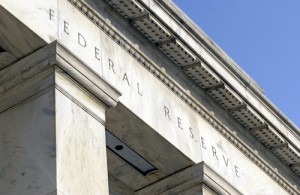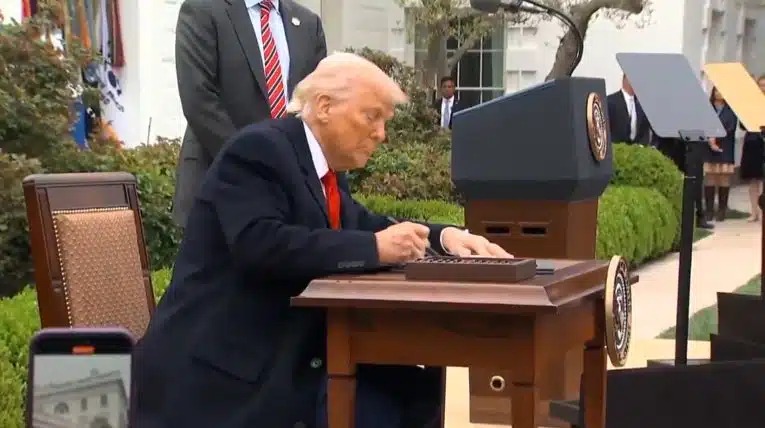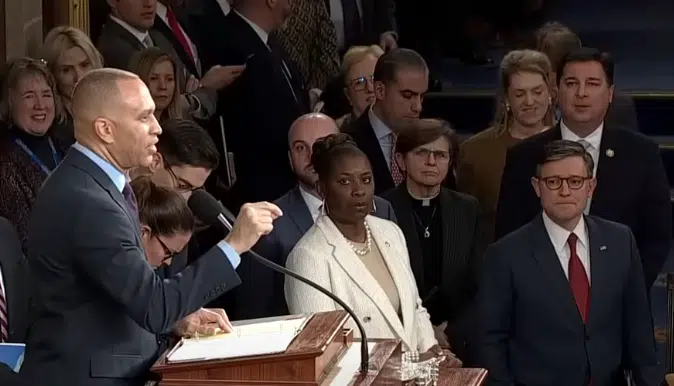
Take Financial Times U.S. economics editor Robin Harding, who proclaims that “The headwinds that buffeted Mr. Obama’s first term — financial crisis, falling house prices, and consumers paying off debt — are set to become tailwinds in the second term.”
What gives him so much confidence? “Based on current Federal Reserve forecasts, by 2015 Mr. Obama should be presiding over an economy growing at 3 percent or more,” he writes.
Well then. If the Fed says so, then they’re pretty smart, right? Won’t they be right?
Maybe. But not based on past performance. The economy has performed well below expectations the past five years. Particularly, below government projections published by the Federal Reserve, which have proven to be consistently wrong.
Let’s take a little trip down memory lane. In Jan. 2008, the Fed saw no recession or financial crisis on the horizon. It projected between 1.3 to 2.0 percent real growth in 2008, and between 2.1 to 2.7 percent growth in 2009.
Instead, the economy contracted by -0.3 and -3.1 percent in 2008 and 2009, respectively.
By Oct. 2008, when it was clear markets were crashing beyond belief, the bank changed its tune. The economy was slowing down considerably, but likely would not shrink. 2008 would see between 0.0 to 0.3 percent growth, and 2009 between -0.2 to 1.1 percent. Wrong again.
In Jan. 2009, it was clear as day the economy had crashed, the Fed finally thought a recession would happen, but would be mild, projecting a contraction between -1.3 to -0.5 percent that year. Wrong again. Again, in 2009, it went down -3.1 percent.
So, the recession was much deeper than anticipated as the Fed failed to foresee the drag that the bad debts racked up in the housing bubble would have on the economy.
Similarly, the Fed’s track record in projecting a recovery has proven to be way off. That year, the Fed projected a V-shaped recovery after 2009. The economy would grow between 2.5 and 3.3 percent in 2010, and between 3.8 and 5.0 percent in 2011.
By Jan. 2010, the Fed had changed its expectations slightly for 2010 — by raising them. Then, they said the economy would grow between 2.8 and 3.5 percent in 2010, although they lowered their expectations for 2011 to between 3.4 and 4.5 percent.
Instead the economy only grew by 2.4 percent in 2010, and by 1.8 percent in 2011. Wrong again.
Even as late as June 2011, the Fed was projecting between 2.7 and 2.9 percent growth for 2011. Way off. Again, the economy only grew by 1.8 percent in 2011.
In Jan. 2012, the Fed said the economy would grow between 2.2 and 2.7 percent. However, so far, it is only growing at an annual rate of 1.76 percent. Just to meet the low-end of their original expectation, the economy will have to grow at an annualized rate of 3.6 percent. To hit the high-end, at 5.6 percent.
Going forward, the Financial Times’ Harding is correct about one thing. The Fed is certainly projecting between 3.0 to 3.8 percent growth in 2015. But why should anyone believe them?
They’re predicting the same level of growth in 2014. Maybe they should just guess there will be 3 percent growth every year. Eventually they might be right. In 2010, it thought unemployment might be as low as 6.6 percent by now. Wrong.
The fact is, no level of knowledge can predict the economic actions of hundreds of millions of people nationwide, nor project the actions of billions of individuals worldwide, all of which will impact the rate of economic growth and the level of joblessness.
That makes Federal Reserve projections the economic equivalent of staring into a crystal ball or taking an astrological reading — to say nothing of the utility of the central bank’s new policy to expand its balance sheet by $480 billion a year, or of its prior expansion of $1.9 trillion throughout the recession.
So, Fed head Ben Bernanke really has no idea what’s really going to happen in the future, and he has no clue what impact his policies will have on growth or unemployment, if any. At best, Bernanke is shooting in the dark.
And as for the financial punditry, they need to start checking their political biases at the door, and begin reporting facts.
Bill Wilson is the President of Americans for Limited Government. You can follow Bill on Twitter at @BillWilsonALG.






